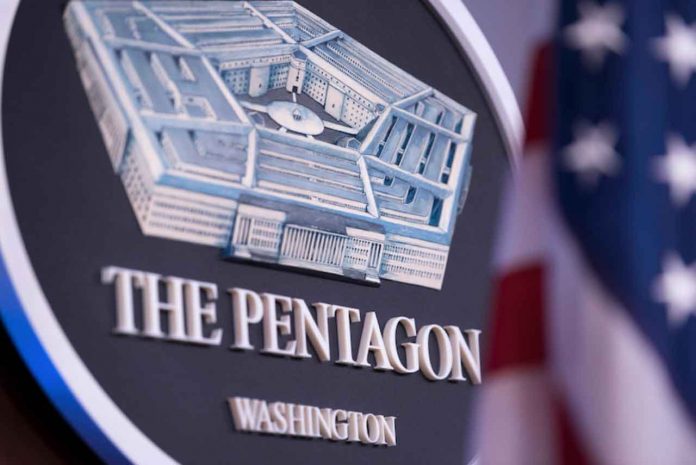|
By C. Todd Lopez
In 2022, Secretary of Defense Lloyd J. Austin III directed the creation of a “tiger team” to look into ways the Defense Department could make the Foreign Military Sales system less foreboding for partner nations interested in purchasing U.S. military hardware. The team wrapped up operations in the spring and transitioned into a Continuous Process Improvement Board, or CPIB, meant to implement solutions recommended by the tiger team and to also be on the lookout going forward for new and novel ways of their own to improve the FMS system. Since then, the department scored wins by implementing four tiger team recommendations: establishment of the CPIB; creation of the Defense Security Cooperation Service; standing up of the Security Cooperation Execution Focus Forum; and the development of an acquisition and sustainment tool kit. Following the 2022 invasion of Ukraine by Russia, interest in purchasing U.S. military hardware has increased substantially, said Cara Abercrombie, who serves as the acting deputy undersecretary of defense for policy. According to the Defense Security Cooperation Agency, in fiscal year 2021, sales through FMS clocked in at about $34.8 billion total. For fiscal year 2022, that number jumped to $49.7 billion. In fiscal year 2023, it jumped again to about $66.2 billion. And so far in fiscal year 2024, FMS sales are already above $80 billion, and may top $100 billion by year’s end. Because of this growth in FMS, the areas for improvement identified by the FMS tiger team, and now being implemented by the follow-on CPIB, are more relevant than ever, she said. Those efforts, Abercrombie said, are some of the most robust to date aimed at helping to make the FMS system easier for American partners and allies interested in getting on board with U.S. military hardware. “We are very serious,” Abercrombie said. “We have put our DOD governance bodies behind it, but we really institutionalized the fact that foreign military sales important, and that meeting allied and partner capability requirements in a timely fashion, meeting their needs, and meeting them where they are continues to be a priority.” The original tiger team stood up because the process through which a foreign nation goes about purchasing U.S. military hardware, fighter aircraft for instance, is exceedingly complex. “There’s consensus that foreign military sales can often be a point of frustration for some of our allies and partners in that they are looking to the United States to provide the top-tier military capability, but it’s a deliberative process that has many steps along the way,” she said. “I think they wanted to see things go a little bit faster. I think they wanted to have a better understanding of how the system works and so this was an effort to shorten timelines on FMS, see where we can improve efficiencies, and just have a better understanding about where there were opportunities for improvement.” To accomplish their effort of identifying pain points and potential solutions in the FMS system, the tiger team looked at a variety of FMS case studies — ones that went well and ones that went bad — and also case studies across various kinds of hardware, to ensure they had a representative view of how the FMS system is experienced by foreign partners. “They were able to derive lessons learned from each, and through that process came up with a number of recommendations,” she said. After submitting their findings in the spring of 2023, the tiger team stood down and the CPIB stood up so it could begin the process of implementing those recommendations. Chief among them was establishment of the Defense Security Cooperation Service, or DSCS. “This involves taking all the security cooperation officers who work in our embassies around the world managing FMS cases and other security cooperation programs, and bringing them into a common service,” Abercrombie said. Personnel who were identified as being part of this new community, about 1,500 in all, are mostly military officers, and are the personnel most closely involved in working with foreign partner nations and helping them navigate procurement of new military hardware from the U.S. What the DOD plans to do is ensure that those personnel are properly trained, equipped and organized specifically to shepherd partner nations through the complex FMS process and to ensure the greatest chance of success. And because those personnel will all be part of a single service, DOD will also be better able to ensure that they are placed where they are needed most. Right now, Abercrombie said, personnel doing FMS work in embassies might be assigned to different parts of the department, such as to a combatant command. And because of this, it’s possible that in some places FMS offices are understaffed for local demand, while in other places, they might be overstaffed. “We’ll now make sure we’ve got the right workforce numbers where we need them,” she said. “They will have a more robust training program. And because we will centrally manage these assignments processes, we will build the training in. Right now, we try to get everyone trained, but we don’t always. So, we’ll be able to have more predictive training. The output is you’ve got a better-trained individual working hand-in-glove with a country to identify requirements.” Also through the DSCS, Abercrombie said, the department will be able to increase the size of the staff to match growing demand. “Since Russia invaded Ukraine, the demand for foreign military sales has gone up exponentially,” she said. “We’ve got to increase the workforce.” One way the department might do that, she said, is to consider using more civilians. The SCEFF is a new effort to identify and rectify problems with an FMS case before those problems become insurmountable.
“The SCEFF is a way for combatant commands to flag, with a regular frequency, high-profile FMS cases that are really critical for key partners in their area of responsibility,” Abercrombie said. “If they see warning signs that something might be amiss — it could be they’re hearing there might be a supply chain issue, it could be something stuck in clearance — it’s a way to elevate quickly for senior-level attention something that could be stuck for any number of reasons.” The SCEFF was stood up last year. “It’s formed to highlight potential challenges before they become big problems,” she said. “It’s an early warning system.” The acquisition and sustainment toolkit, another success championed by the CPIB, amounts to a list of best practices regarding contracting policy. “It just informs contracting officers about best practices when working with a partner,” Abercrombie said. “You know, when you can use certain more rapid acquisition authorities or when you might be able to use different acquisition pathways.” Within FMS, Abercrombie said, the acquisition part of the process is exactly the same as when the U.S. approaches defense contractors to buy things for itself. For instance, whether the department wants to help a foreign partner nation purchase a Guided Multiple Launch Rocket System or a U.S. military service wants the system for itself, in both cases the complex acquisition of that system will need to go through the Army’s Program Executive Office for Missiles and Space. The acquisition process itself is already complex, even when U.S. military services buy equipment for themselves. Doing the same thing with a partner nation, through FMS, increases that complexity. The A&S toolkit is aimed at helping contracting personnel find better ways to do things when partner nations are involved. “Because our FMS system is built on our acquisition system, we always look through the lens of how we do acquisition,” she said. “The A&S toolkit is saying let’s layer on, for the first time, how to meet partner needs. There are a range of contracting options available to you as a contracting officer, which ones might work most expeditiously in an FMS context — that’s the type of things we provided them in this toolkit.” Nations who want to be security partners with the U.S. must be compatible with the U.S. military, Abercrombie said. The U.S. and its partners must have compatible radios, for instance, but must also be able to share ammunition or exchange spare parts. This means those nations might need to purchase compatible U.S. military hardware through the FMS process. But for some nations, investing in U.S. military hardware can be out of reach due to cost. The U.S. wants more partners, Abercrombie said, and so finding ways to help willing nations become compatible is in the national interest. The department has a handful of competitive financing options to make attaining new hardware more manageable for nations who can’t pay the total cost upfront. One of those options is the credit assured payment schedule, or CAPS. The official policy for this option was codified just last year, and it offers partner nations access to a payment schedule if they are able to secure a standby letter of credit from a qualified bank and pay an initial deposit of 25%. With CAPS, partners have the ability to have a payment schedule and spread the cost of their defense procurements over time. “Paying 100% of that up front could both be very costly, but also for a democracy, where you have annual budgets that you negotiate across your government or with your parliament, also very hard to get political support for,” she said. “But by spreading it out over the lifecycle of the contract, which could be many years, that becomes more palatable.” U.S. military hardware is more expensive, Abercrombie said, because the total cost for purchasing new fighter aircraft is more than just the cost of the hardware. The U.S. doesn’t just sell the aircraft, for instance. It sells aircraft with a total package approach to include spare parts, training, and other support over time.
Competitive financing options like CAPS mean more interested nations will be able to buy in to U.S. military hardware and the long-term support and partnership that comes with that hardware, Abercrombie said. “We want our partners to be able to operate with us,” she said. “Interoperability is really important.” And the long-term commitment that comes with FMS sales also enhances partnerships as well, she said. “We take a whole life-cycle approach to working with the partner,” Abercrombie said. “We’re doing the training with them, or we might be assisting with the maintaining or supporting. For instance, if you buy a fighter jet from the United States, we’ll be flying with you, making sure you’ve got the latest, whether we’re developing new maintenance plans, or we’ve got new capabilities coming online or upgrades. It’s a 30-year relationship.” Abercrombie said the CPIB maintains high-level attention on FMS and security cooperation now and will continue to do so into the future. “Every secretary of defense I’ve worked for in the past 20 years has inevitably spoken about capabilities with a foreign partner,” she said. “It comes up because it’s important. Countries are investing their dollars in buying from another country. This is important to them and it’s something that they care about.” |






